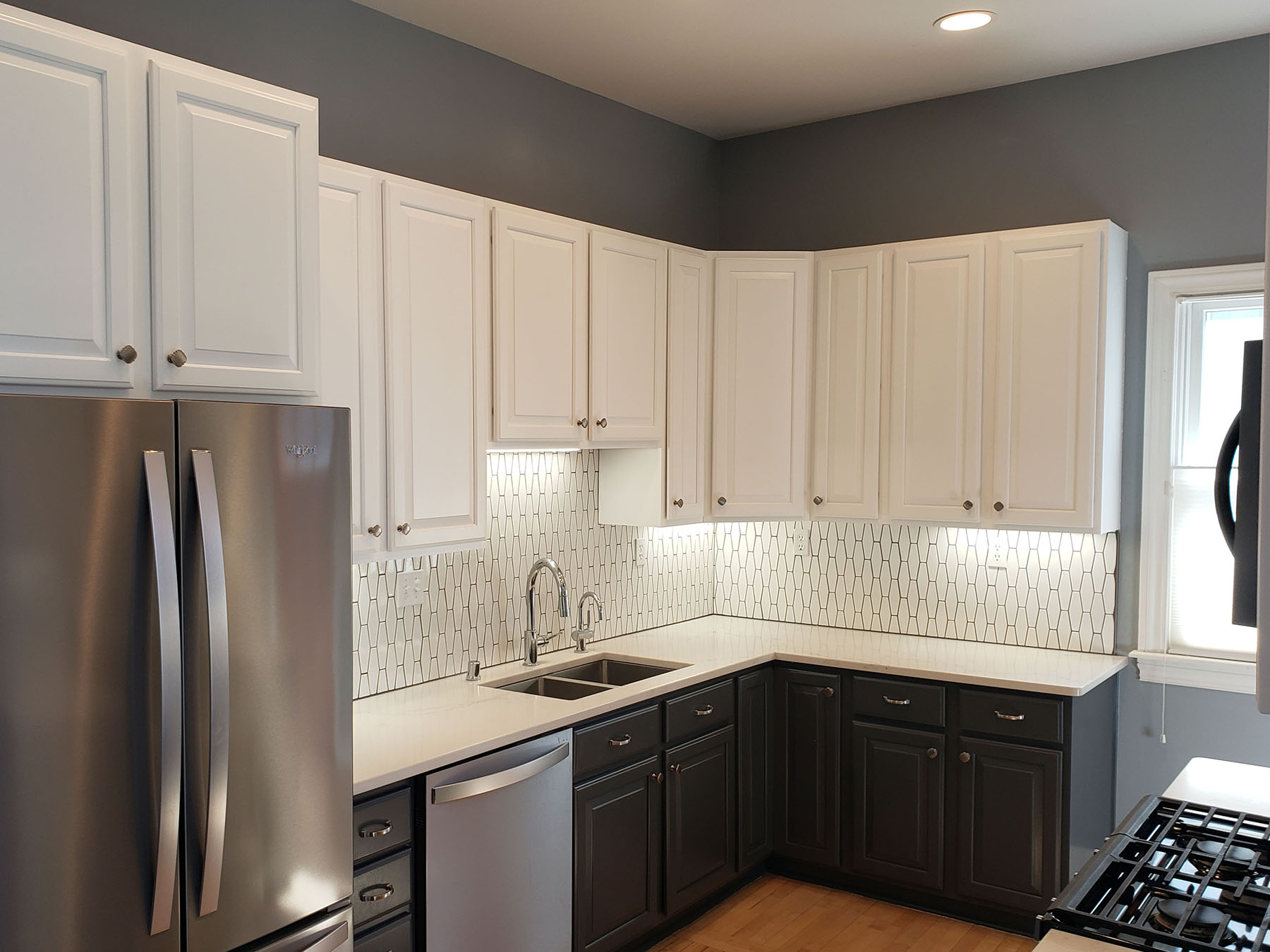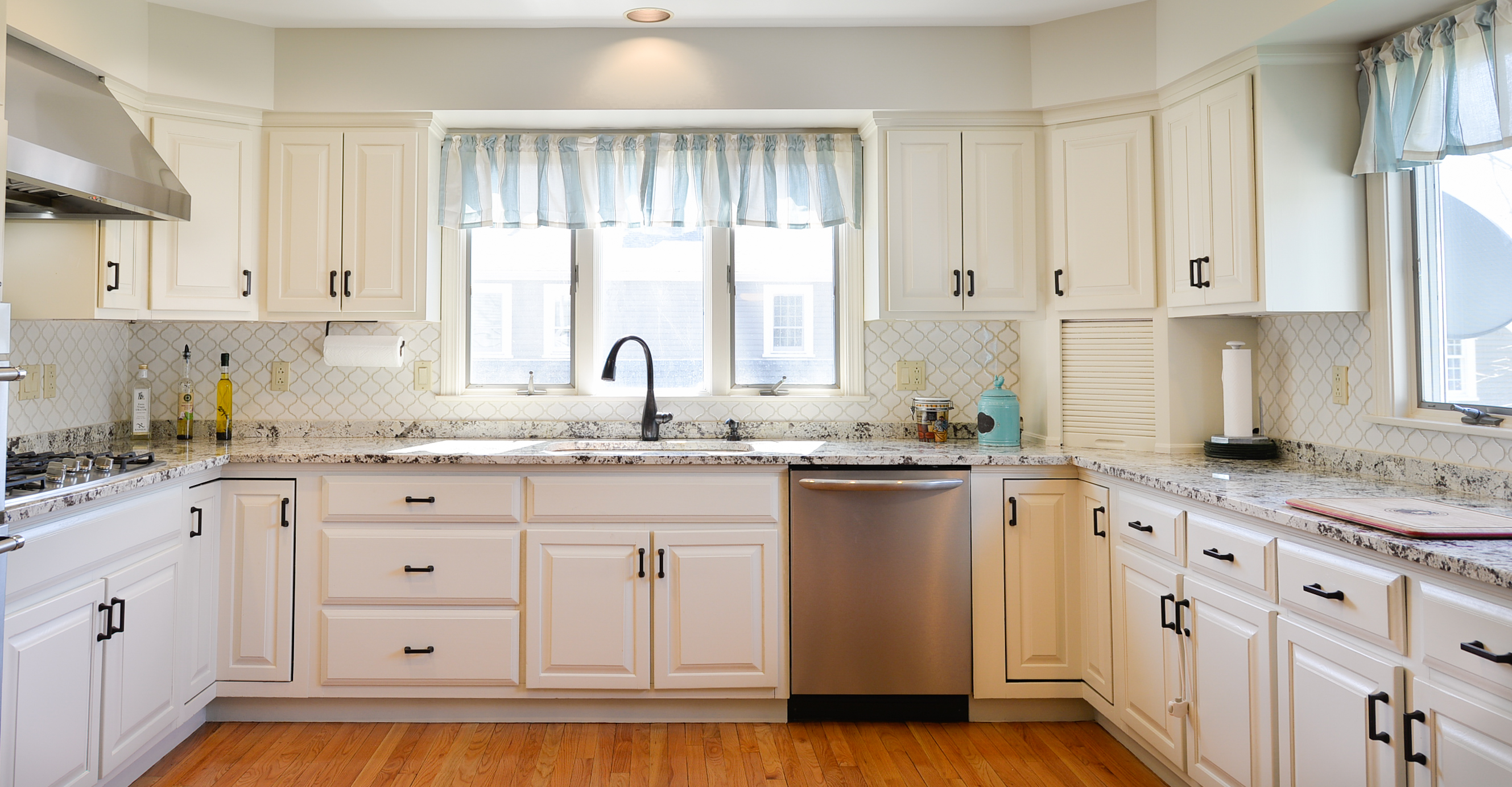Finding the Right Painter in Boston: Kitchen Cabinet Painting Boston

Choosing the right painter for your kitchen cabinet painting project in Boston is crucial for achieving a high-quality, long-lasting finish. A poorly executed paint job can detract significantly from your kitchen’s aesthetic appeal and even lead to costly repairs down the line. Careful consideration of several key factors will ensure a successful outcome.
Qualities of a Reputable Kitchen Cabinet Painter in Boston
A reputable kitchen cabinet painter in Boston possesses a combination of professional qualifications, experience, and commitment to customer satisfaction. Licensing and insurance are fundamental aspects to verify. A properly licensed contractor demonstrates adherence to local regulations and provides a level of accountability. Comprehensive insurance protects both the homeowner and the painter from potential liabilities during the project, covering accidents or damages. Beyond these essentials, experience in handling kitchen cabinet painting projects specifically is paramount. Look for painters with a proven track record, evidenced by positive client reviews and a portfolio showcasing their previous work. Inquire about their experience with various paint types and finishes to ensure they’re equipped to handle your specific needs.
Comparison of Paint Finishes for Kitchen Cabinets
Selecting the appropriate paint finish significantly impacts the durability, cleanability, and overall look of your kitchen cabinets. Several options exist, each with its advantages and disadvantages. Semi-gloss paints offer excellent durability and are easy to clean, making them a popular choice for high-traffic areas like kitchens. However, imperfections might be more visible with a semi-gloss finish. Satin paints provide a balance between durability and a softer sheen, hiding minor imperfections better than semi-gloss but still offering good cleanability. Matte or eggshell finishes offer a more contemporary, less reflective look, but they are generally less durable and more susceptible to scratches and stains. The choice ultimately depends on personal preference and the level of durability required.
Typical Steps in a Professional Kitchen Cabinet Painting Project
A professional kitchen cabinet painting project typically involves a series of well-defined steps to ensure a flawless result. These steps are crucial for proper surface preparation, application, and protection of the finished product.
| Step | Description | Materials | Considerations |
|---|---|---|---|
| 1 | Preparation and Cleaning | Degreaser, sandpaper, tack cloth | Thorough cleaning is essential to remove grease and grime for optimal paint adhesion. |
| 2 | Surface Repair | Wood filler, putty knife, sandpaper | Repairing any cracks, dents, or imperfections ensures a smooth, even finish. |
| 3 | Priming | Primer appropriate for the cabinet material | Priming provides a consistent base for the topcoat and improves paint adhesion. |
| 4 | Painting | Chosen paint, brushes, rollers, or spray equipment | Multiple thin coats are generally preferred over one thick coat for even coverage and to avoid drips. |
| 5 | Finishing Touches | Clear coat (optional), hardware | A clear coat can add extra protection and enhance the finish. Reinstalling hardware completes the project. |
Color Palettes for Boston-Area Kitchens
Boston’s design trends often reflect a blend of classic New England charm and modern aesthetics. Popular color palettes for kitchen cabinets incorporate both warm and cool tones.
- Classic Neutrals: Shades of white, cream, and gray remain timeless choices, offering versatility and elegance. These colors create a bright and airy atmosphere, ideal for smaller kitchens.
- Warm Naturals: Earthy tones like beige, taupe, and warm grays evoke a sense of comfort and warmth, complementing traditional and farmhouse styles. These tones pair well with natural wood elements.
- Navy and Deep Blues: Deep blues add a touch of sophistication and drama, particularly in kitchens with ample natural light. They create a rich and inviting atmosphere.
- Greens and Greys: Muted greens and soft grays are increasingly popular, offering a tranquil and calming feel. These shades work well with various countertop materials and backsplash options.
Preparing for the Painting Project

Transforming your kitchen cabinets with a fresh coat of paint is a rewarding project, but proper preparation is key to achieving a professional-looking finish that lasts. Overlooking this crucial step can lead to an uneven paint job, peeling, and ultimately, wasted time and resources. Thorough preparation ensures a smooth, durable, and aesthetically pleasing result.
Kitchen cabinet painting boston – Preparing your kitchen cabinets for painting involves a multi-step process focusing on surface cleaning, sanding, and priming. Each step is vital for optimal paint adhesion and a long-lasting finish. Failing to properly prepare the surfaces will result in a subpar paint job, no matter how high-quality the paint itself may be. Consider this phase an investment in the longevity and beauty of your updated kitchen.
Surface Cleaning
Before any sanding or priming begins, a thorough cleaning is essential. Kitchen cabinets accumulate grease, grime, and food residue over time. This build-up prevents paint from adhering properly. Start by removing all cabinet doors and hardware. Wash the cabinets and doors with a degreasing solution – a mixture of warm water and a mild dish soap is often sufficient. For stubborn grease, consider using a commercial degreaser. After washing, rinse thoroughly with clean water and allow everything to dry completely before proceeding. A completely dry surface is paramount to ensure proper adhesion.
Sanding the Cabinets
Sanding creates a slightly rough surface, improving paint adhesion. Start with a higher-grit sandpaper (120-150 grit) to smooth out any imperfections and remove any remaining residue. Follow up with a finer grit (220 grit) for a smoother finish. Always sand in the direction of the wood grain to avoid scratches. Use a sanding block for even pressure and consistent results. Remember to wear a dust mask to protect your lungs from the fine sanding dust. Thorough sanding is essential for a high-quality finish.
Priming the Cabinets
Priming is crucial for ensuring a smooth, even finish and preventing the old finish from bleeding through the new paint. A high-quality primer designed for cabinets will seal the wood and provide a better surface for the paint to adhere to. Apply the primer in thin, even coats, allowing each coat to dry completely before applying the next. The number of coats required will depend on the type of primer and the condition of the cabinets. Two coats are usually sufficient. Using a high-quality primer significantly increases the durability and longevity of the paint job.
Cabinet Preparation Checklist
This checklist ensures you haven’t missed any crucial steps before beginning the painting process. A systematic approach minimizes the risk of errors and ensures a professional finish.
| Task | Completed |
|---|---|
| Remove all cabinet doors and hardware | |
| Clean cabinets thoroughly with degreaser | |
| Rinse and completely dry cabinets | |
| Sand cabinets with 120-150 grit sandpaper | |
| Sand cabinets with 220 grit sandpaper | |
| Clean away sanding dust | |
| Apply primer coats (allow drying time between coats) | |
| Reinstall hardware (if desired) |
Ventilation and Safety Precautions
Proper ventilation is crucial during the painting process to minimize exposure to paint fumes. Open windows and doors to ensure adequate airflow. Consider using a respirator or dust mask to protect your respiratory system from paint fumes and sanding dust. Always follow the manufacturer’s instructions on the paint and primer cans regarding safety precautions and ventilation requirements. Wear appropriate safety gear, including gloves and eye protection, to protect yourself from accidental splashes or contact with chemicals.
Protecting Surrounding Areas, Kitchen cabinet painting boston
Protecting your countertops and floors is essential to prevent paint splatters and spills. Cover countertops and floors with drop cloths or plastic sheeting. Use painter’s tape to mask off areas that you don’t want to be painted. This meticulous preparation minimizes cleanup time and prevents accidental damage to your kitchen surfaces. Consider using removable floor coverings for easy cleanup.
Post-Painting Care and Maintenance
Protecting your newly painted kitchen cabinets is crucial to preserving their beauty and longevity. Proper care and maintenance will ensure your investment lasts for years to come, maintaining the fresh, vibrant look you achieved with your painting project. This guide Artikels essential steps for cleaning, addressing minor damage, and preventing common issues.
Cleaning Methods and Damage Prevention
Regular cleaning is key to preventing dirt and grime from building up and dulling the finish. Avoid abrasive cleaners, scouring pads, and harsh chemicals, which can scratch or damage the paint. Instead, opt for a gentle solution of warm water and mild dish soap. Apply the solution to a soft cloth or sponge, gently wiping the cabinets in the direction of the wood grain. Rinse with clean water and dry thoroughly with a soft, lint-free cloth. For stubborn stains, consider using a specialized cabinet cleaner designed for painted surfaces, always testing it on an inconspicuous area first. To prevent damage, be mindful of sharp objects and avoid slamming doors or drawers. Consider using protective pads or liners inside drawers to prevent scratches. Regularly inspect the cabinets for any signs of damage and address them promptly.
Addressing Minor Scratches or Chips
Minor scratches or chips can be easily repaired with a touch-up paint kit. The kit should include paint that matches your cabinets’ color and a small brush for precise application.
- Clean the damaged area thoroughly with a damp cloth to remove any dirt or debris.
- Allow the area to dry completely before applying the touch-up paint.
- Using a small brush, apply a thin layer of paint to the scratch or chip, blending it gently into the surrounding area.
- Allow the paint to dry completely according to the manufacturer’s instructions.
- If necessary, apply a second thin coat to ensure complete coverage.
- Once the paint is dry, lightly sand the area with fine-grit sandpaper to smooth any imperfections and blend the repair seamlessly.
- Finally, wipe away any sanding dust and apply a protective clear coat to help seal the repair and protect it from future damage.
Common Issues and Solutions
Several issues can arise after kitchen cabinet painting. Understanding these potential problems and their solutions allows for proactive maintenance and problem-solving.
- Peeling Paint: This is often caused by inadequate surface preparation before painting or using the wrong type of paint. Repainting may be necessary, ensuring proper surface preparation this time. Consider consulting a professional painter for advice.
- Yellowing: This can occur with certain types of paint over time, especially if exposed to direct sunlight. Choosing a high-quality, UV-resistant paint can mitigate this.
- Water Damage: Leaks or spills can damage the paint if not addressed promptly. Repair any leaks immediately and thoroughly dry the affected area. If the damage is extensive, repainting or professional repair might be necessary.
